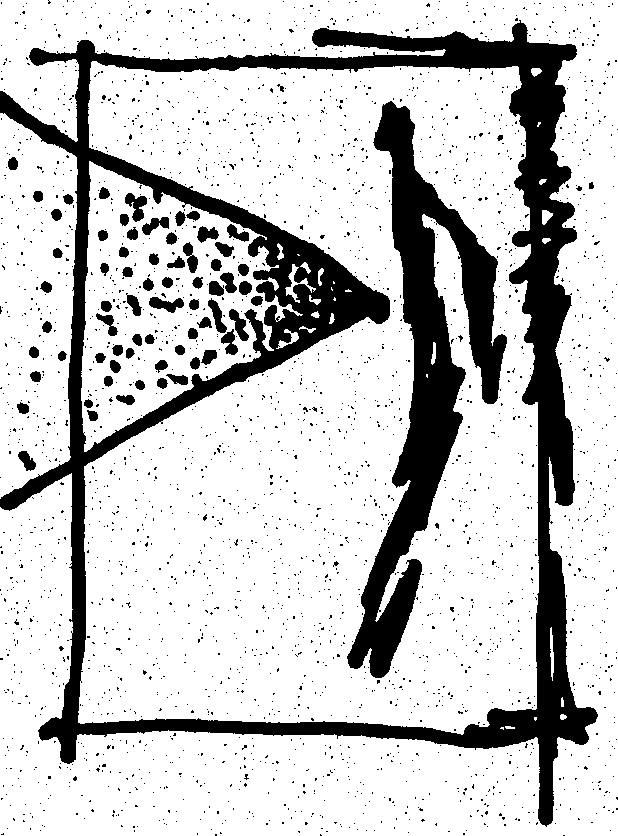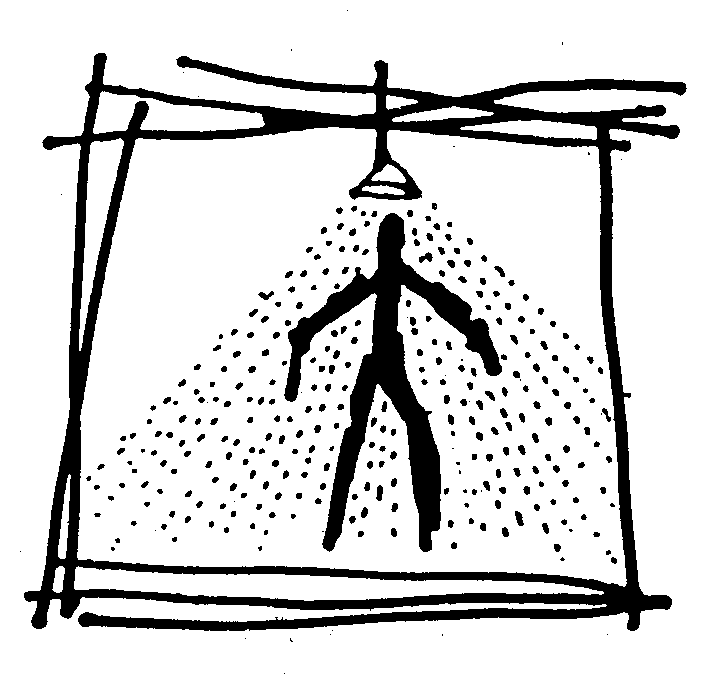
| From Californians for Alternatives to Toxics, a statewide public interest organization which has worked for 20 years to eliminate the use of toxics in our environment. Why CATs Is So Important |
PESTICIDE EXPOSURES | |
|
Symptoms First Aid Legal Aspects Laboratories Resources | |
|
No one expects to be affected by pesticides, yet fast action is required to deal with an incident. For your protection, read this flyer. Keep it on hand. If exposed follow first aid procedures and see a doctor.
"PESTICIDE" includes herbicides, fungicides, rodenticides, insecticides, defoliants, pre-harvest dessicants, wood preservatives, plant-growth regulators, snail poison, etc. | |
Any ONE, or any combination of the following may indicate a reaction to a pesticide.
Symptoms may appear soon after exposure or not for several days.
 |
Headache | Blurred or double vision |
| Weakness | Skin irritation or rash | |
| Dizziness | Eye irritation or discharge | |
| Nausea | Increased salivation | |
| Vomiting | Bloody nose or dry membranes | |
| Cramps | Difficulty breathing | |
| Diarrhea | Anxiety or restlessness | |
| Sweating | Incoordination | |
| Tremors | Numbness or tingling | |
| Shock | Pain | |
| Coma | Pinpoint pupils | |
| Death | Convulsions | |
| And added by Sonoma Pesticide Alert: | ||
| Aggression and sudden onset volatility (often occuring 8-12 hours after exposure to Carbamates and Organophosphates) | ||
| Slurred speech | Heart arrhythmias | |
| Pores oozing waxy excretions | Gastrointestinal problems | |
IF EXPOSED:
| LEAVE CONTAMINATED AREA. If spray occurred outside,move upwind or get inside a building. Close doors, windows, vents, and chimneys. If pesticide was used indoors, get outside to fresh air. Later, open windows and doors to air the building. IF ALONE, CALL FOR HELP* as symptoms could become worse. Dial 911 for AMBULANCE. *See end of web page for POISON INFORMATION NUMBERS. |
DERMAL (SKIN) EXPOSURE Pesticides easily penetrate the skin and will continue to expose the victim for hours unless washed off. Decontaminate victim as follows: | |
 |
|
| SEE A DOCTOR, as even a mild case can become worse. The victim should not drive. | |
EYE EXPOSURE
Even brief pesticide exposures to the eyes can result in serious damage. Act quickly.
INGESTION (Swallowing)
The container label should say whether to induce vomiting or not. If in doubt, get name of pesticide and call 911 for Poison Control. NEVER use salt to induce vomiting. Use finger or blunt object at back of throat in adults. For children, use syrup of ipecac.
INHALATION (Breathing) EXPOSURE
This is common within greenhouses or indoors.
CHEMICAL SENSITIVITY
People vary widely in their tolerance to pesticide exposures. Some may suffer severe reactions to trace amounts of substances applied quite some distance away, while others appear unaffected by the same exposure.
AT THE DOCTOR'S OFFICE
MAKE SURE YOUR DOCTOR FILES APPROPRIATE REPORTS. Obtain copies of all reports for your reference.
 | If you or your property sustain harm due to pesticide exposure, you may be able to collect compensation for damages. Evidence to support your case must be collected very soon after exposure. Consult a lawyer or legal aid group. |
1. OBTAIN COMPLETE PESTICIDE LABEL
to determine if application was legal. Contact Agricultural Dept. to see if permit is required. Get copy.
2. REPORT SUSPECTED VIOLATIONS
to County Agriculture, Health Department, Police or Environmental Protection Agency. Request Department of Agriculture Pesticide Enforcement to visit the site, take samples and investigate incident promptly.
4. KEEP A DETAILED WRITTEN JOURNAL OF:
5. SAMPLE COLLECTION
of contaminated clothing, soil, water, plants, etc. Legal chain of custody may be required for proof in court. Ideally, Pesticide Enforcement (See Resources end of web page) should be responsible for samples. You may want to have an impartial third party, such as a doctor or veterinarian take duplicate samples. CONTACT LAB PRIOR TO COLLECTION to determine requirements.
6. TAKE PHOTOGRAPHS
of applicators, equipment, and plants including landmarks such as fences, buildings, roadsigns, particular tree, and/or witness. Note date and exact location.
SPECIAL TEST KITS MAY BE REQUIRED
Contact Lab for specific protocol. Ask if Lab is State approved for those tests being admitted as legal evidence.
1. PACIFIC TOXICOLOGY LAB
1545 Pontius Ave.
Los Angeles, CA 90025
(800) 23-TOXIC in California
(800) 32-TOXIC elsewhere
(213) 479-4911
CONTACT: Jim Peterson, Ph.D., or James Dahlgren, M.D.
TESTS: polychlorinated biphenyls or organochlorines in serum; organophosphates in urine; halogenated and aromatic solvents in blood; trace metals, 2,4-D and 2, 4, 5-T in urine and in blood.
2. ENVIRO-HEALTH SYSTEMS, Inc.
990 North Browser Rd., Suite 800
Richardson, Texas 75081
(972) 234-5577 or
(800) 451-0116 - outside Texas
CONTACT: John L. Laseter or Craig Degenhardt
TESTS: organochlorines; phenoxy herbicides; volatile brominated compounds (EDB, DBCP); hydrocarbon solvents (paint thinners, etc.); organophosphates; PCB's; heavy metals; solvents (aromatic compounds, halogenated hydrocarbons); phenols.
3. ANTIBODY ASSAY LAB
1715 Wilshire
Santa Ana, CA 92705
(800) 522-2611
CONTACT: Dr. Broughten
TESTS for compromised immune systems (which result from exposures to pesticides or other toxics).
PLEASE NOTE:
Pesticides, their "inert" ingredients, and the various solvents or "spreader activators" may be difficult to identify and isolate, even with sophisticated testing procedures.
A negative test result does not necessarily eliminate the possibility of a toxic reaction to these chemicals or their mixtures.
Some people may be made ill by the "inert" ingredients and/or the solvents. Consider this in diagnosis and treatment.
|
| RESOURCES |
| EMERGENCY POISON CONTROL | DIAL 911 |
| SAN FRANCISCO REGIONAL POISON CONTROL | (415) 206-5265 |
| COUNTY PUBLIC HEALTH DEPARTMENT | (see your local phone book listing under "County Government Offices") |
| NATIONAL PESTICIDE TELECOMMUNICATIONS NETWORK | (800) 858-7378 |
| HAZARD EVALUATION SYSTEM & INFORMATION SERVICE Department of Health Services, CA Occupation-related exposure (Call Collect) | (415) 540-3014 |
| DEPARTMENT OF PESTICIDE REGULATION ENFORCEMENT DIVISION | (916) 445-3920 |
| ENVIRONMENTAL PROTECTION AGENCY San Francisco Office | (415) 744-1090 |
| COUNTY AGRICULTURE COMMISSIONER | (see your local phone book listing under "County Government Offices") |
| CALIFORNIANS FOR ALTERNATIVES TO TOXICS | (707) 822-8497 |
Published by:
Californians for Alternatives to Toxics
P.O. Box 1195 (78 Sunny Brae Center), Arcata, CA 95518
707-822-8497(fax - 7136) cats@igc.org
http://www.alternatives2toxics.org/
Californians for Alternatives to Toxics is a public interest organization that
works to give people greater control over toxics in their environment.
For more information and for additional copies (of this booklet) contact CATs.
...
See also: http://www.citlink.net/citlink/b/bhima/whattodopest.htm